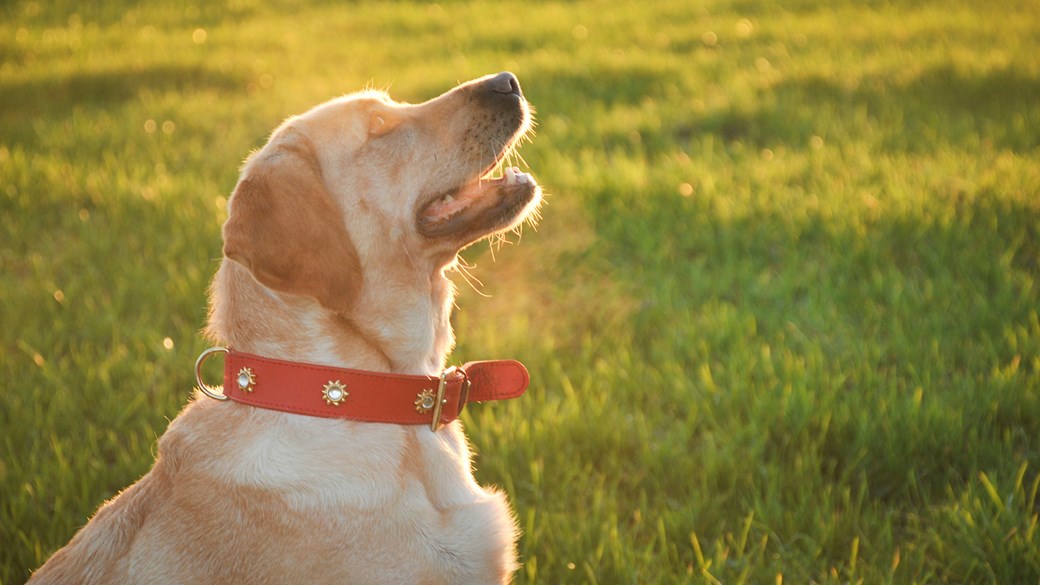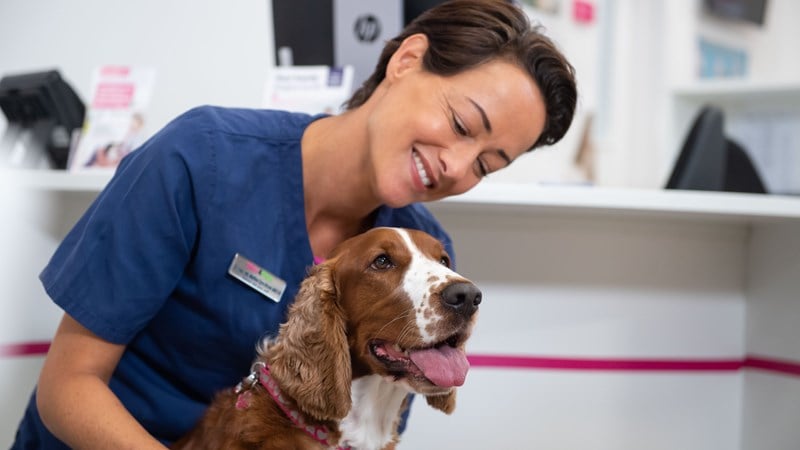
Can dogs get sunburn?
If the sun is strong enough to cause human skin to burn, it’s strong enough to give your dog sunburn too.
All dogs can get sunburnt, but dogs with short or thin coats or light-coloured fur and skin, such as Staffies and other bull terriers, dalmatians, Weimaraners, Chinese cresteds, greyhounds and boxers, are typically more at risk.
Sites where the skin is exposed, or where the coat is thinnest, are most likely to be affected. The commonest areas for dogs’ skin to burn are on the face (especially the nose, eyelids and around the lips), the ear tips, the tummy, and underneath or between the legs. Dogs who like to lie on their backs while relaxing can get sunburnt very easily, particularly if they have pale-coloured skin.
It’s best to prevent your dog from getting sunburnt in the first place. Like all burns, it’s painful, and repeated exposure can lead to serious problems: sunburn is a leading cause of skin cancer in dogs.
Signs and symptoms of sunburn in dogs
It might be difficult to tell that your dog is becoming sunburnt until it’s too late. If your dog is lying outside in bright sunlight, you may not be able to see their skin becoming damaged but, once indoors, it might become more obvious.
Sunburnt skin on a dog might look pink (if the dog’s skin is normally pale), shiny or, in severe cases, swollen or blistered. After a while, sunburnt skin in dogs might become scabby, flaky or crusty, and the hair in affected areas might fall out. Sunburnt ear flaps could look swollen, and the edges or tips might seem dry or cracked.
A dog with sunburn might appear agitated or itchy and they may lick or scratch at themselves, often whimpering if they touch a painful area. They might be anxious when you go to touch or examine them.
In severe cases, you might see blisters or sores on your dog’s skin and these may become infected.
Treatment for sunburn in a dog
If you think your dog could have sunburn, bring them indoors immediately and contact your vet team for advice. Dogs don’t get sunburnt as easily as we do, so even slight signs of sunburn in a dog could indicate significant skin damage.
Your vet will assess the severity of the burns and recommend the appropriate treatment. This might involve administering pain relief, cleansing or flushing any areas where the skin surface is missing, antibiotics if the lesions have become infected, and topical medications or dressings to protect the damaged skin while it heals. Sometimes, burns are so severe that a dog needs to be hospitalised and placed on a drip.
Your vet might be happy for you to treat mild sunburn at home, using cold compresses on affected areas to help with the pain and inflammation.
While your dog is recovering from sunburn, prevent further exposure to the sun by using dog sunscreen, or cover their affected areas when they need to go outside.
Prevention of sunburn in a dog
It’s best to prevent your dog from getting sunburnt in the first place. By protecting your dog from the harmful effects of UV from exposure to the sun, you’ll also be reducing their chances of developing skin cancer in future.
Avoid your dog being exposed to the sun when it’s at its strongest, normally during the middle of the day. If your dog is outdoors when it’s bright and sunny, make sure they have shade, either from buildings or trees, or get them a dog sun shelter, which you can pack and take wherever you go.
If you can’t keep your dog out of the sun, luckily, sunscreen for dogs is available and it’s easy to use. Sunscreen made for dogs is safer than human suncream, which may contain ingredients that are toxic to pets when licked off. Apply it to all areas where you can see exposed skin, for instance, on the nose, ear tips, tummy and groin. Apply the sunscreen according to the instructions on the packaging and remember to reapply often and after your dog has been in water, as needed.
FAQs
While human sunscreen can prevent sunburn in dogs, it usually contains ingredients that are poisonous to dogs if they lick it off. For this reason, it’s important only to use dog-specific suncream on your dog. If you also have a cat, bear in mind that not all pet sunscreen is safe for use on cats. So, if you need sunscreen for your cat, too, or if your cat is likely to try to wash your dog while they are wearing sunscreen, check whether it’s a cat-safe product.
Many human suncream products contain zinc oxide. Ingesting high levels of zinc damages dogs’ red blood cells, leading to a life-threatening anaemia. Zinc can also be absorbed through the skin, so repeated application of sunscreen containing zinc oxide can also lead to zinc toxicity. (Incidentally, it’s the same high zinc content in onions that makes onions and their close relatives poisonous to dogs.)
Other toxic ingredients in human sunscreen include salicylates, which are related to aspirin. In high concentrations, salicylates can cause irritation and redness on dogs’ skin and, when ingested in a high enough quantity, they can lead to gastric ulceration.
For this reason, always choose a dog-specific suncream and be sure to perform a skin patch test at least 24 hours before you want to use the sunscreen on your dog, so that you can check it doesn’t irritate their skin and that they don’t find it tasty or want to lick it off.
Dogs’ noses are a common place for them to get sunburn. They often have areas on their noses with less pigmentation, which makes sunburn more of a risk. To prevent your dog’s nose from getting sunburnt, you could apply a small amount of dog-specific sunscreen. Dogs often lick their noses, so it’s vital that any sunscreen product you use on your dog’s nose doesn’t contain toxic ingredients, such as zinc oxide or high levels of salicylates, which are related to aspirin.
Dogs with pink noses are more likely than those with dark noses to get sunburnt. Even so, all dogs should be protected from harmful UV rays during the strongest sunlight. Protection could take the form of dog sunblock, or you could just ensure that your dog has some shade during the times when the sun is at its most damaging.
Puppies are more likely to suffer from sunburn than older dogs. Their skin is thinner, still becoming pigmented and may not be fully protected by their coat. For this reason, they need much more vigilant protection from the sun than adult dogs do. We know that repeated exposure to the damaging effects of the sun is a leading cause of skin cancer in dogs, so it makes sense that your puppy is properly protected.
While dog sunscreen can be very useful, puppies could be more likely to suffer adverse effects if they lick off a lot of sunscreen. For this reason, you might find it safest to keep your puppy out of strong sunlight, normally during the middle few hours of the day, or make sure they have a shady spot if they are outdoors.
While black dogs are probably less likely to suffer from sunburn than light-coloured dogs are, they could still be at risk if they have a short coat or if they have areas of skin with less pigment (often to be found under patches of white hair). If you are concerned that your black dog could be at risk of sunburn, take sensible precautions, such as providing a shady spot for them to rest or play when it’s sunny, or use a dog sunscreen on any at-risk areas, such as pink skin, ear tips or anywhere that has only a thin covering of hair.
Health Plans to keep your dog healthy
At Vets4Pets we offer a range of Health Plans that make essential routine treatments more affordable. You'll save money on things like annual vaccinations, flea and worm treatment and routine health check-ups.

Summer tips for your dog
As the summer gets into full swing, here are some summer tips and facts: from heatstroke to what to do when you’re going on holiday…

Dog Advice
Read more of our expert dog advice to keep your dog happy and healthy.
